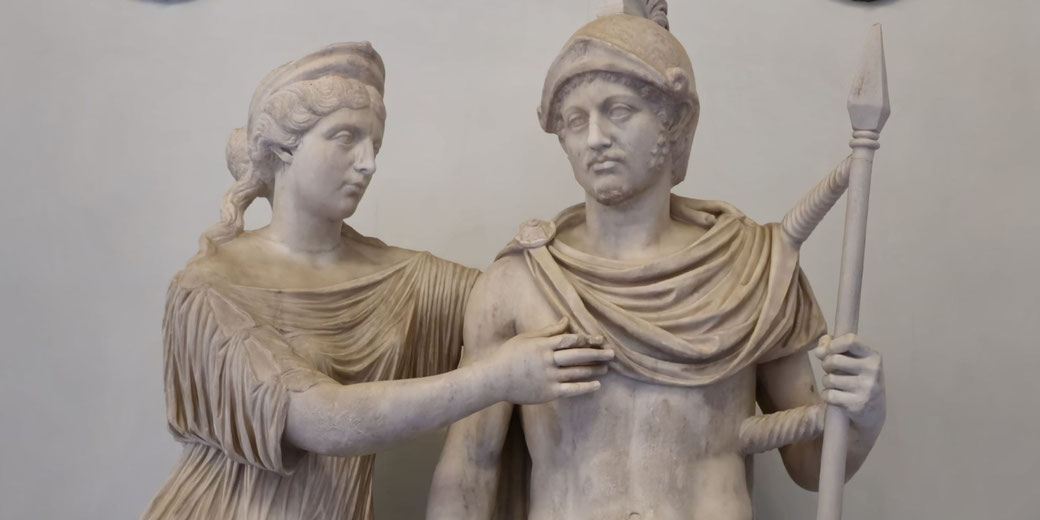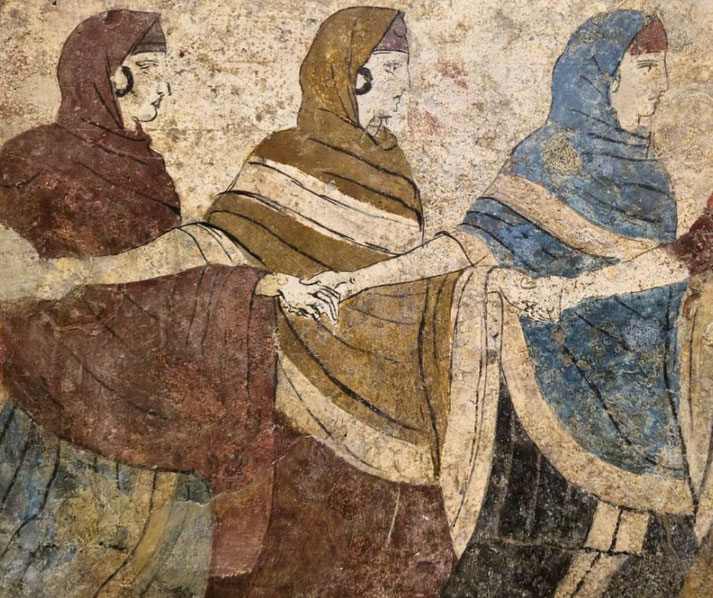What was marriage like in Ancient Greece?

In the ancient world, just like today, marriage was a deeply personal union. However, in ancient Greece, it was also a critical element of societal structure and cultural continuity.
From the celebrated rituals of militaristic Sparta to democratic Athens, the expectations around marriage and how it shaped the lives of individuals varied greatly.
The different kinds of marriage in ancient Greece
Most of our knowledge of Ancient Greek marriage comes from the classical period, which lasted from the 5th to the 4th centuries BC.
During this era, city-states like Athens and Sparta had distinct approaches to matrimony, which was shaped by their unique social structures and values.
In Athens, for instance, marriage was mainly about ensuring legitimate offspring and continuity of the family line.
By contrast, in Sparta, the emphasis was more on producing strong warriors, with marriage seen as a civic duty to the state to achieve this end.
In some parts of Greece, particularly in Sparta, there were unique marital practices aimed at producing strong offspring.
In particular, Spartan marriages were known for their emphasis on physical fitness and compatibility, with rituals that included the bride cutting her hair short and dressing in men's clothing to emphasize her role as a warrior's partner.

How people got engaged in ancient Greece
Marriages were typically arranged by the families of the bride and groom.
One of the key legal components of marriage was the dowry, a sum of money or property that the bride's family provided to the groom.
The dowry served as a form of financial security for the bride and was meant to contribute to the household expenses.
In the event of a divorce, the dowry was usually returned to the bride's family, although the specifics could vary depending on the city-state and the circumstances of the separation.
Once both families were happy with the agreement and the dowry, the man and the woman were declared to be 'engaged', called the engyesis.
This was essentially a contractual agreement made between the groom and the bride's father.
This arrangement emphasized the transactional nature of marriage, focusing on the establishment of alliances between powerful or important families.
The wedding ceremony in ancient Greece
A wedding in ancient Greece was a multi-day affair, with each one considered an important part of the event.
The first day, known as the Proaulia, was focused on the preparations and offerings to the gods, particularly to Hera, the goddess of marriage.
The bride and her female relatives would gather together to make these sacrifices and weave together her special garment, known as the peplos.
The second day was the main event, known as the gamos.
The day began with the bride's ritual bath, a purification rite using water from a sacred spring.
She would then put on her peplos, as well as a veil, and a wreath of flowers or laurel on her head.
The groom also prepared for the day. He would dress in specific formal attire and lead a procession to the bride's house, accompanied by his friends, relatives, and musicians.
This procession, known as the pompa, was a meant to be a public declaration of the marriage.
Once at the bride's home, the engaged couple would participate in the main wedding ceremony.
Similar to today, it involved the exchange of vows and the ritual of joining hands, known as dexiosis.
This ceremony typically took place in front of a sacred altar, where the couple would make offerings to the gods, particularly Hera, the goddess of marriage.
Next, the newly married couple would share a wedding feast with their guests.
There was a special cake made of sesame seeds and honey served during this feast, which was meant to be symbolic of fertility and the metaphorical sweetness of their future life together.
For the family and guests of the feast, it was primarily a time for celebration and socializing with each other.
The final event of the day was the epaulia, or the bridal chamber ritual. This is when the couple would retire to their new home.
The bride would be especially escorted to the bridal bed, and the groom would join her, officially consummating their marriage.
Divorce and widowhood
Divorce was surprisingly straightforward in many parts of Ancient Greece, particularly for men.
In Athens for instance, a husband could simply divorce his wife by sending her back to her parents' home, along with her dowry.
For women, the process was much more complex. They needed the support of a close male relative or guardian to initiate a divorce, since women had no legal power.
As far as we are aware, divorce did not seem to be particularly common. This is probably because it could disrupt family alliances and affect social standing.
Also, the return of the dowry was meant to ensure the financial security of the divorced woman.
A divorced woman was considered of 'lesser value', which meant that the value of dowry would be affected by any break in a marriage agreement.
For women, becoming a widow presented a different set of challenges.
Those without adult sons, could find themselves in an extremely vulnerable position, both socially and economically.
The inheritance laws in city-states like Athens favored male heirs, which could leave widows dependent on their children or male relatives to survive.
In Sparta, however, women had more rights to property and could even inherit their husband's estate, giving them a much more secure financial position.
However, unlike divorcees, widows were often expected to remarry, especially if they were young and without children.
This was seen as a way to ensure their financial security and maintain the family lineage.
On a positive note, these women frequently had more autonomy in choosing their second husband compared to their first marriage.
What do you need help with?
Download ready-to-use digital learning resources
Copyright © History Skills 2014-2025.
Contact via email
With the exception of links to external sites, some historical sources and extracts from specific publications, all content on this website is copyrighted by History Skills. This content may not be copied, republished or redistributed without written permission from the website creator. Please use the Contact page to obtain relevant permission.





